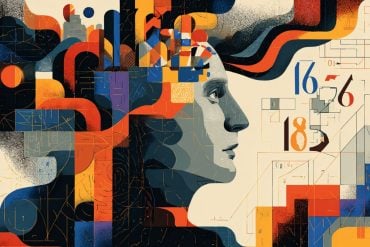Summary: A new study shows that mice, like humans, can experience a sense of embodiment toward an artificial limb, similar to the famous rubber-hand illusion. When their real limb was hidden and both real and fake limbs were brushed in sync, mice visually tracked a threat to the fake limb, indicating perceived ownership.
This discovery creates a powerful new animal model for exploring the brain mechanisms of body ownership and prosthesis embodiment. It could pave the way for advanced neuroprosthetics and treatments for conditions like phantom limb pain or body dysmorphia.
Key Facts:
- Rodent Rubber Hand Illusion: Mice responded to threats against fake limbs when tactile and visual cues were synchronized.
- Visual Tracking Shows Embodiment: Mice fixated longer on the artificial limb under threat when it matched their own and moved in sync.
- New Model for Research: This study provides the first practical rodent model for studying body ownership and prosthetic integration.
Source: PLOS
Mice can develop a sense of embodiment of an artificial limb, similar to humans who participate in the rubber-hand illusion experiment, according to a study published June 5th in the open-access journal PLOS Biology by Luc Estebanez from CNRS: Centre National de la Recherche Scientifique, France, and colleagues.
We perceive our limbs as part of ourselves, and we feel threatened by any menace to them. This sense of embodiment can be disrupted by brain injuries leading to a loss of recognition of body parts, and even to their active rejection from the body representation.

In the case of amputated patients, efficient use of a prosthesis can be hampered by a lack of prosthesis embodiment, thereby causing a progressive decrease in daily prosthesis use and finally an abandonment of the prosthetic limb.
In contrast, prosthesis embodiment is associated with a reduction in the sensations arising from the phantom of the missing limb, including painful perceptions.
In an experimental setting, it is possible to either build or disrupt the sense of embodiment of an artificial limb by manipulating the temporal coincidence of tactile and visual stimulations.
In particular, in the rubber-hand illusion experiment, a rubber limb is placed in a position that makes it visible to the participant, while the real hand is hidden from view. Both the hidden real hand and the visible artificial hand are stroked in synchrony with a brush.
A large fraction of the subjects in these experiments report that after this stimulation, the rubber hand they are seeing is their real hand. So far, the physiological bases of sensory-based forelimb embodiment remain unclear, partly due to the lack of an animal model to study embodiment.
To address this challenge, Estebanez and colleagues developed an analog of the rubber-hand illusion embodiment protocol for mice.
The researchers presented head-fixed mice with an artificial, 3D-printed static replica of their right forelimb at a plausible physiological location. At the same time, their real forelimb was hidden from sight and held in place below the platform where the artificial limb was located.
During a two-minute pairing sequence, the researchers applied mechanically-controlled synchronous or asynchronous brush strokes to the real and the artificial forelimbs. Then the researchers dropped a sharp object toward the artificial forelimb that was within view of the animal.
During this sequence, the gaze of the mice was tracked with high-speed videography. Consistent with the broader literature on the rubber-hand illusion, the mice focused their gaze on the threat for several seconds when brush strokes were synchronous, but not when they were asynchronous.
The behavioral response was also stronger when the artificial forelimb looked similar to a limb versus a white cube-shaped object.
According to the authors, this work has practical implications for the study of forelimb embodiment in a model that offers unparalleled experimental venues. For example, mapping out the brain circuits of embodiment using genetic and optogenetic research tools could lead to novel embodiment restoration strategies.
Beyond this, the research also supports the idea that rodents can display behavioral correlates of embodiment in settings that are known to trigger embodiment in humans. This adds to a series of recent findings suggesting that rodents, and mice in particular, can display some capabilities that have been associated with higher cognitive functions.
The authors add, “The rubber hand illusion is a staple of the study of body representation in humans, but so far there was no equivalent of this test in the most actionable model: mice.
“Here we have shown that limb embodiment can be triggered and measured efficiently in mice.
“This opens up many opportunities to better understand the basic mechanisms of body ownership and apply it for instance to improve prosthetics.”
Funding: This work was funded by LE PRC Hermin, ANR. https://anr.fr/ to LE, JCJC Mesobrain, ANR. https://anr.fr/ to LE, PRC Expect, ANR. https://anr.fr/ to DES, PRC PerBaCo, ANR. https://anr.fr/ to DES, Fondation 3DS https://www.lafondation3ds.org/fr/ to LE, 80|Prime 2020, CNRS, https://www.cnrs.fr/ to LE and AC, MITI PRIME 2024, CNRS, https://www.cnrs.fr/ to LE and AC, PRC MotorSense, ANR. https://anr.fr/ to VE, RISE iNavigate, 873178, Horizon 2020 Framework Programme. https://cordis.europa.eu/project/id/873178 to DES, OI hCODE, Université Paris-Saclay, https://www.universite-paris-saclay.fr/objets-interdisciplinaires/h-code to LE.
The funders played no role in the design of the study, data collection and analysis, preparation of the manuscript, or decision du publish.
About this neuroprosthetics and neuroscience research news
Author: Claire Turner
Source: PLOS
Contact: Claire Turner – PLOS
Image: The image is credited to Neuroscience News
Original Research: Open access.
“Embodiment of an artificial limb in mice” by Luc Estebanez et al. PLOS Biology
Abstract
Embodiment of an artificial limb in mice
Body ownership disorders can be triggered by disease or body damage. Methods to probe limb embodiment are required to address those disorders. This includes the development of neuroprostheses that better integrate into the body scheme of the user.
To this end, the “rubber hand illusion” protocol is a key behavioral method to probe the powerful embodiment that can be triggered by congruent somatosensory and visual inputs from the limb.
So far, the neurophysiology of limb embodiment remains poorly known, in part because translating the rubber hand illusion to animal models such as the mouse remains challenging.
Yet, mapping out the brain circuits of embodiment thanks to the use of genetic and optogenetic research tools would allow to propose novel embodiment restoration strategies.
Here, we show that the rubber hand illusion described in humans can be translated to the mouse forelimb model using an automated, videography-based procedure.
We exposed head-fixed mice to a visible, static 3D-printed replica of the right forelimb, while their own forelimb was hidden from their sight. We synchronously brushed their hidden forelimb and the replica.
Following these visuo-tactile associations, the replica was visually threatened, and we probed the reaction of the mice using automated tracking of pupils and facial expression.
The mice focused significantly more of their gaze toward the threatened forelimb replica after receiving synchronous tactile and visual information compared to asynchronous.
More generally, across test and control conditions, the mouse pupillary response was consistent with the human overt response to the rubber hand illusion.
Thus, our results show that mice exhibit quantifiable behavioral markers of the embodiment of an artificial forelimb.






